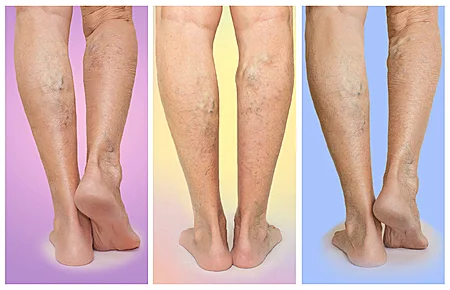Table of Contents
Introduction - Peripheral Arterial Disease (PAD)
Peripheral Arterial Disease Symptoms
Some people have no symptoms of PAD, but many suffer from leg pain especially when walking. The pain or cramping starts with activity but usually eases after resting. When the leg pain, or claudication, is severe, it can be hard to walk, work or do other types of activities.
- Besides claudication, other symptoms can include:
- Leg weakness or numbness
- Foot or leg coldness
- Change in color
- Sores on your feet, toes or legs that won’t heal
- Hair loss on feet and legs
Treating PAD
If you have leg pain or weakness, visit your foot doctor right away. PAD can cause complications such as heart attack, stroke and critical limb ischemia that can lead to gangrene and amputation.
To diagnose peripheral arterial disease, we will do a physical exam to check your pulse and blood pressure. The Ankle-brachial index (ABI) test is useful as it compares the blood pressure in your arm with the blood pressure in your ankle. Other tests such as ultrasound and an angiogram can confirm our diagnosis.
The goals of PAD treatment are to manage the pain and to stop atherosclerosis from progressing. Lifestyle changes may accomplish both of these goals, with the most important change is to quit smoking.
Your doctor may prescribe medications to lower your blood pressure and cholesterol levels, control pain and prevent blood clots.
In severe cases, surgery or angioplasty may be needed to treat PAD.
Preventing Peripheral Arterial Disease
A healthy lifestyle can help prevent painful claudication from PAD including:
- Quitting smoking
- Regular exercise
- Maintaining a healthy weight
- Keeping blood sugar in control if you have diabetes
- Eating foods low in saturated fats



